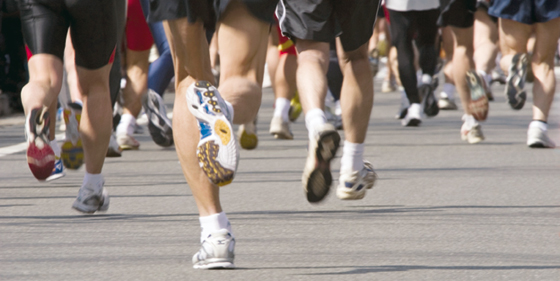

Currently the number of road races practitioners has increased sharply, and hence the interest in respect of any such means are frequent.
The study about the pace of the corridor is very scarce in the scientific community, so we will use teacher reports and concepts traditionally used to allow a greater understanding.
A term widely used among runners is the Pace, which literally means “step”, however, in the road race, Pace refers to race pace used along the way.
We must look for another term used by runners, the “Pacer”. Although very similar, the terms have different meanings. The teacher Alexandre Machado highlights the meanings of both, which reports that “Pace” it comes to race pace, or else, as long as the subject takes to complete a racing kilometers (Min / Km). While “Pacer” it is a runner who sets the pace, and may be in official proof or training.
The importance of Pace
According to teacher Alexandre Machado, in his blog, the pace is important in training because, helps the practitioner to be able to find the right pace for the distance it will go, inhibiting anxiety often found in novice runners, who tend to have a high-speed output and end the weary path.
In competition, the pace determines the peloton where the hall will be located at the start, therefore, the intention is to group runners with the same pace.
How to calculate the Pace?
To find your pace needs to measure the pace in minutes per kilometer (min / km), or select how long you go through 1 km. There are several mathematical formulas that help runners to discover the ideal rhythm for each type of test. The Nelson Evâncio coach, proposes the VMA calculation (Maximum Aerobic Speed). Understand:
>> First Step
Make a 3 km test track and transform the total time in seconds. Then calculate your pace in the distance. Example:
3.000 meters = 12 minutes 12, 60 seconds = 720 seconds 720 seconds divided por 3.000 ou 3 km = 240 seconds/60 = 4’/km each kilometer.
The formula >>
Time to calculate your ideal pace in other distances. The proposed formula is as follows:
– 3 km / 3000 meters = 100% of VMA
– 5 km / 5000 meters = 97% of VMA
– 10 km / 10,000 meters = 93-94% of VMA
– 21 km / Half Marathon = 88% of VMA
– 42 km / Marathon = 84% of VMA
>> Calculating Pace
(Based on the 240 seconds measured above).
We multiply the value in seconds by 1,00+ the decimal value for the number of percentiles reduced with advancing distances, for example:
Note: In the case of 21 km, the proposal is to be 88% of VMA therefore 100-88 = 12 or 0,12.
In this case the calculation would be 240 seconds x 1,12.
5 km/5.000 meters = 240 seconds x 1,03 = 247 seconds = 4’07’’/km – 10 km/10.000 meters = 240 seconds X 1,07 = 257 seconds/km = 4’17’’/km – 21 km/Half Marathon = 240 seconds x 1,12 = 269 seconds/km = 4’29’’/km – 42 km /Marathon= 240 seconds x 1,16 = 278 seconds/km = 4’38’’/km
Still have questions?
Check out the video below: